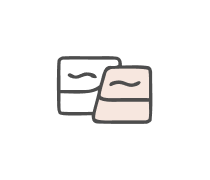____________- the supercontinent that formed 300 million years ago and...
Sea-floor spreading provides a mechanism for continental drift.
Different seismic waves act differently depending on the material of...
Tectonic plate movement and isostatic adjustments do not affect...
____________ - a giant ocean wave that forms after a volcanic...
Most earthquakes occur
___________- the boundary between tectonic plates that are sliding...
New ocean floor is constantly being produced through the process known...
Shear stress
Vibrations in the Earth that are caused by a sudden movement of rock...
______________- the point on Earth's surface directly above an...
____________- the boundary between tectonic plates that are colliding
An underwater mountain chain that formed by sea-floor spreading is...
__________- the solid, outer layer of Earth that consists of the crust...
Continents grow through the accreation of terranes. Continents break...
____________- a measure of the strength of an earthquake
___________- the boundary between tectonic plates that are moving away...
Two plates grind past each other at a
__________ - the hypothesis that states that the continents once...
_____________ - in Earth science, the amount of damage caused by an...
The force per unit area that changes the shape and volume of rock...
Most injuries during earthquakes are caused by
The region along tectonic plate boundaries where one plate moves...
Convection occurs because heated materials becomes
When the weight of an area of Earth's crust increases, the...
P waves travel
__________ - the study of the alignment of magnetic materials in rock,...
Support for Wegener's hypothesis of continental drif includes...
__________ - a form of ductile strain in which rock layers bend,...
____________- a region of numerous, closely spaced faults. (Hint:...
______________- a condition of gravitational and buoyant equilibrium...
A mountain is classified according to the chemical composition of the...
Large areas of flat-topped rock high above the surrounding landscape...
_________- the theory that explains how large pieces of the...
____________- At divergent boundaries, the leading edge of the plate...
______________ - in geology, a seismic wave that travels along the...
In the process of elastic rebound, as a rock becomes stressed, it...
______________- a piece of lithosphere that has a unique geologic...
___________- the single, large ocean that covered Earth's surface...
_____________- a break in a body of rock along which one blick slides...
____________ - in geology, a seismic wave that travels through...
Folds in which both limbs remain horizontal are called
S waves cannot pass through
A fault in which the rock on either side of the fault plane moves...
Earthquakes that cause severe damage are likely to have what...
Scientists think that the upwelling of mantle material at mid-ocean...
____________- any change in a rock's shape or volume caused by...
____________- a series of mountains that are closely related in...
___________ - a mountain that forms where faults break...
___________ - a circular or eliptical almost symmetrical...
______________ - an area on Earth's surface where no direct...
Earthquake magnitude scales measure the effects of an...
_______________- the process by which Earth's crust breaks apart;...
The layer of plastic rock that underlies the tectonic plates is...
When a fault is not vertical, the rock above the fault plane makes up...
When stress is applied under conditions of high pressure and high...
The largest mountain systems are part of still larger systems called
____________- a mountain that forms when rock layers are...
_____________- the process by which supercontinents form and break...
Which of the following is NOT a method used to forecast...
_____________- as the cooling rock sinks, the asthenosphere below it...
















